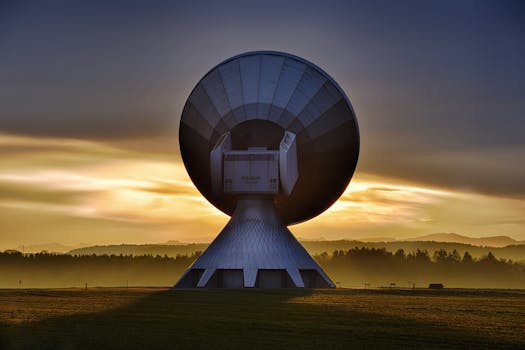
Recent advances in satellite telecommunications are transforming the way we communicate and access information beyond Earth’s surface. Recent advances in satellite telecommunications have led to significant improvements in the field, enabling faster, more reliable, and more secure communication services. With the increasing demand for global connectivity, satellite telecommunications play a crucial role in providing internet access, navigation, and communication services to remote and underserved areas.
Satellite telecommunications involve the use of satellites orbiting the Earth to transmit and receive data, voice, and video signals. The technology has been around for several decades, but recent advances have led to significant improvements in the field. One of the major breakthroughs has been the development of high-throughput satellites (HTS), which offer faster data speeds and greater capacity than traditional satellites. HTS have enabled the widespread adoption of satellite-based broadband services, providing internet access to millions of people around the world.
Another significant advancement in satellite telecommunications has been the development of low-Earth orbit (LEO) satellites. LEO satellites orbit the Earth at an altitude of around 2,000 kilometers, which is much lower than traditional geostationary satellites. This lower orbit enables faster data transmission and lower latency, making LEO satellites ideal for real-time communication services such as video conferencing and online gaming. Companies such as SpaceX and OneWeb are launching constellations of LEO satellites to provide global internet coverage and other communication services.
Advances in Satellite Technology
Recent advances in satellite technology have also led to improvements in the design and manufacturing of satellites. The use of advanced materials and 3D printing has enabled the creation of smaller, lighter, and more efficient satellites. This has reduced the cost of launching satellites into space and has made it possible to launch larger constellations of satellites. Additionally, the development of electric propulsion systems has improved the maneuverability and lifespan of satellites, enabling them to operate for longer periods and provide more reliable services.
The use of artificial intelligence (AI) and machine learning (ML) is also being explored in satellite telecommunications. AI and ML can be used to optimize satellite operations, predict and prevent failures, and improve the overall efficiency of satellite systems. For example, AI-powered systems can analyze data from satellites and other sources to predict weather patterns and optimize satellite transmission protocols. This can help to improve the reliability and performance of satellite services, especially in areas prone to natural disasters or other disruptions.
Applications of Satellite Telecommunications
Satellite telecommunications have a wide range of applications, from providing internet access to remote and underserved areas to supporting critical infrastructure such as navigation and emergency services. Satellite-based navigation systems such as GPS and GLONASS provide location information and timing signals to a wide range of users, including aviation, maritime, and land transportation. Satellite-based emergency services such as search and rescue and disaster response also rely on satellite telecommunications to provide critical communication services in areas affected by natural disasters or other crises.
Satellite telecommunications are also being used to support the development of smart cities and other IoT applications. Satellite-based sensors and monitoring systems can provide real-time data on environmental conditions, traffic flow, and other urban systems, enabling more efficient and sustainable management of city infrastructure. Additionally, satellite-based communication services can provide connectivity to IoT devices in areas where terrestrial networks are not available, enabling the widespread adoption of IoT technologies.
Challenges and Opportunities
Despite the many advances in satellite telecommunications, there are still several challenges that need to be addressed. One of the major challenges is the issue of space debris, which can pose a significant risk to the operation of satellites and other space-based systems. The increasing number of satellites in orbit has also raised concerns about congestion and interference, which can affect the performance of satellite services. Additionally, the high cost of launching satellites into space and the limited availability of spectrum resources can make it difficult for new companies to enter the market and for existing companies to expand their services.
However, these challenges also present opportunities for innovation and growth. The development of new technologies such as satellite-based solar power and advanced propulsion systems can help to reduce the cost and environmental impact of satellite operations. The use of AI and ML can also help to improve the efficiency and performance of satellite systems, enabling the widespread adoption of satellite-based services. Additionally, the increasing demand for global connectivity and the growing need for reliable and secure communication services are driving investment and innovation in the satellite telecommunications sector.
Conclusion
In conclusion, recent advances in satellite telecommunications are transforming the way we communicate and access information beyond Earth’s surface. The development of HTS, LEO satellites, and other technologies has enabled faster, more reliable, and more secure communication services, providing internet access, navigation, and other critical services to remote and underserved areas. While there are still challenges to be addressed, the opportunities for innovation and growth in the satellite telecommunications sector are significant, and the technology is likely to play an increasingly important role in shaping the future of global communication and connectivity.




